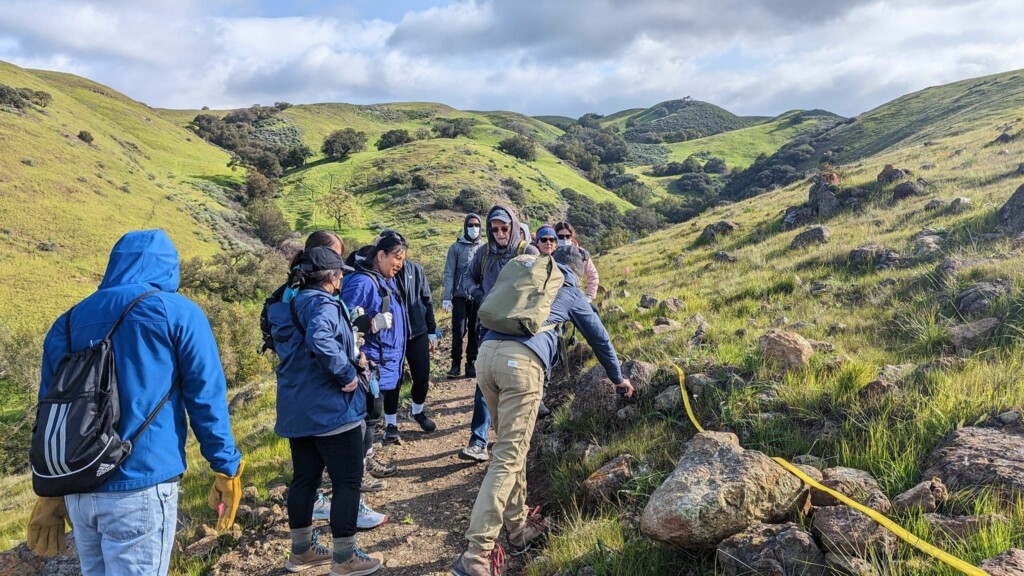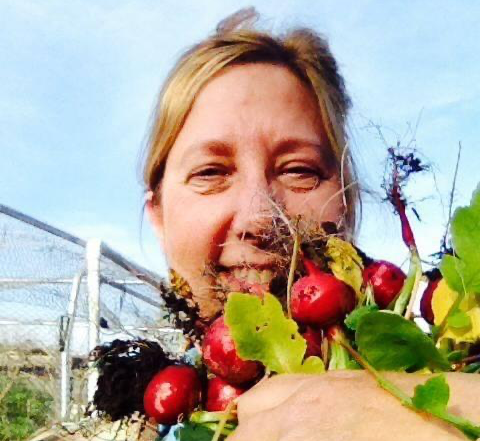Gilroy and South Bay Extended Weather Forecast
Your Garden … with Sharon McCray: It’s time to dig in and get your Gilroy garden ready for winter months
It's not too late to plant daffodils or other bulbs. By Sharon McCray Sharon McCray As winter fast approaches, it's time to get everything in order so when it finally does arrive, the [...]
Main story: Farm animal rescue group moves to a new South Valley site
Alma Bonita Animal Rescue founded in 2017 by Morgan Hill couple Photo by Nolan LyleSheila Murphy, who along with her husband, Michael, founded Alma Bonita Animal Rescue, with some of her rescued farm animals. [...]
Your Garden … with Sharon McCray: Get your garden ready for the cold months of winter
Now is a good time to sow California wild flower seed to brighten your garden in spring By Sharon McCray Sharon McCray It's time to dig in and get your garden ready for [...]
Editorial: Preservation of open space is vital as development increases
Coyote Ridge is an excellent example of why we must make wilderness conservation a priority
![]()

Photo courtesy Open Space Authority
This editorial is the opinion of Gilroy Life
Silicon Valley is known worldwide as the epicenter of technology and innovation. But what many people don’t realize is that more than half of Santa Clara County is actually rural ranch and farm land and wilderness areas. As the September opening of the Máyyan ‘Ooyákma/Coyote Ridge Open Space Preserve shows, these natural habitats are precious gems in our own backyard.

Photo courtesy Open Space Authority
This new 1,859-acre preserve, 20 miles north of downtown Gilroy, offers breathtaking views and serpentine grasslands that are home to rare and endangered species. It serves as an important wildlife corridor connecting the Santa Cruz Mountains and Diablo Range. The cultural history here is also significant, as it lies within the traditional territory of the Muwekma Ohlone Tribe.
As development continues to spread across Silicon Valley, preservation of our remaining open spaces becomes even more crucial. The southern portion of Santa Clara County is exceptionally rich in biodiversity and endemic species found nowhere else on Earth. Places like Coyote Ridge act as oases for nature and give residents a chance to rediscover the beauty right outside their door.
If we want future generations to enjoy unspoiled wilderness and understand our connection to the land, then we must act now to conserve these precious habitats. Supporting organizations like the Santa Clara Valley Open Space Authority that acquire and manage open space is key. We cannot take for granted that land once developed can never be reclaimed.
The opening of Coyote Ridge in late August reminds us that Silicon Valley is more than office parks and freeways. At its heart, it remains wild and green. This is a heritage we must never forget. By preserving our open spaces today, we ensure that the soul of Silicon Valley lives on.
The Coyote Ridge preserve is an excellent example of why we must make wilderness conservation a priority. But it is just one part of a larger network of open spaces across the South Valley that require our protection. Places like the Santa Teresa and Calero County Parks, along with areas like the Coyote Valley, also provide crucial habitats for wildlife to thrive.

Photo courtesy Derek Neumann
As our county continues to focus future development in urban areas, we have a responsibility to avoid sprawl and fragmentation of these natural lands. This means promoting compact, high-density housing near public transit hubs and commercial centers. Urban growth boundaries are also an effective tool.
Additionally, we should fully fund the Santa Clara Valley Habitat Plan, which balances development and conservation. The initiative was issued in 2012 by Santa Clara County, the city of San José, the city of Morgan Hill, the city of Gilroy, the Santa Clara Valley Water District, and the Santa Clara Valley Transportation Authority. The plan’s goal is to protect and encourage the growth of endangered species in our county. It is a 50-year plan, costing an estimated $660 million as of 2012.
Passing local open space bonds and supporting nonprofits like the OSA ensures we have the resources to acquire and manage more high-priority habitats. Connecting our parks and refuges through wildlife corridors allows species to migrate and strengthens ecosystems.
The South Valley may be the backyard of Silicon Valley, but it remains the wild heart and soul of our region. Coyote Ridge gives us hope that through smart planning and conservation we can strike the right balance between technology, development and nature. By saving our open spaces today, the wonder and diversity of this land will endure for generations to come.
Preserving the serpentine grasslands and ridges of the South Valley is not just about protecting nature — it is also about safeguarding our quality of life. These open spaces provide a vital respite from urban life, a place where residents can hike, bike, ride horses, observe wildlife and simply enjoy the scenic beauty.
 As our cities become more congested and crowded, access to wilderness grows ever more precious for our mental and physical health. Coyote Ridge and other preserves offer easy access to nature right from our doorstep. They also help support industries like agriculture, ranching, recreation and tourism that rely on unspoiled landscapes.
As our cities become more congested and crowded, access to wilderness grows ever more precious for our mental and physical health. Coyote Ridge and other preserves offer easy access to nature right from our doorstep. They also help support industries like agriculture, ranching, recreation and tourism that rely on unspoiled landscapes.
We must avoid the temptation to develop every last acre of land for housing or commercial use. Our open spaces are far more valuable as natural habitats and places for people to refresh their spirits. Lands once paved over or built upon can never truly be reclaimed. That is why we need to act decisively to conserve these treasures while we still have the chance.
With vision and commitment from leaders, smart planning policies, and public engagement, we can achieve the ideal balance between technology, development and open space in Silicon Valley. The opening of Coyote Ridge shows the immense rewards when we invest in nature and our collective well-being. This proud legacy is one we must continue for all who call South Valley home.


